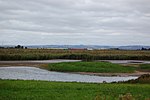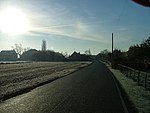Blacktoft

Blacktoft is a village and civil parish in the East Riding of Yorkshire, England. The village is situated on the north bank of the River Ouse, 1 mile (1.6 km) west from where it joins the River Trent and becomes the Humber. It is approximately 6 miles (10 km) east from Howden and 23 miles (37 km) south-east from the county town of York. Blacktoft lies within the Parliamentary constituency of Haltemprice and Howden an area that mainly consists of middle class suburbs, towns and villages. The area is affluent, placed as the 10th most affluent in the country in a 2003 Barclays Private Clients survey, and has one of the highest proportions of owner-occupiers in the country.The civil parish of Blacktoft consists of the village of Blacktoft, Bellasize, Faxfleet and Yokefleet. According to the 2011 UK Census the parish had a population of 322, an increase of one on the 2001 UK census figure.Blacktoft Sands RSPB reserve lies across the Ouse. The relatively new island of Whitton Island in the Humber Estuary falls partly within the parish.
Excerpt from the Wikipedia article Blacktoft (License: CC BY-SA 3.0, Authors, Images).Blacktoft
Blacktoft Lane,
Geographical coordinates (GPS) Address Nearby Places Show on map
Geographical coordinates (GPS)
| Latitude | Longitude |
|---|---|
| N 53.708164 ° | E -0.725865 ° |
Address
Blacktoft Lane
DN14 7YW , Blacktoft
England, United Kingdom
Open on Google Maps










